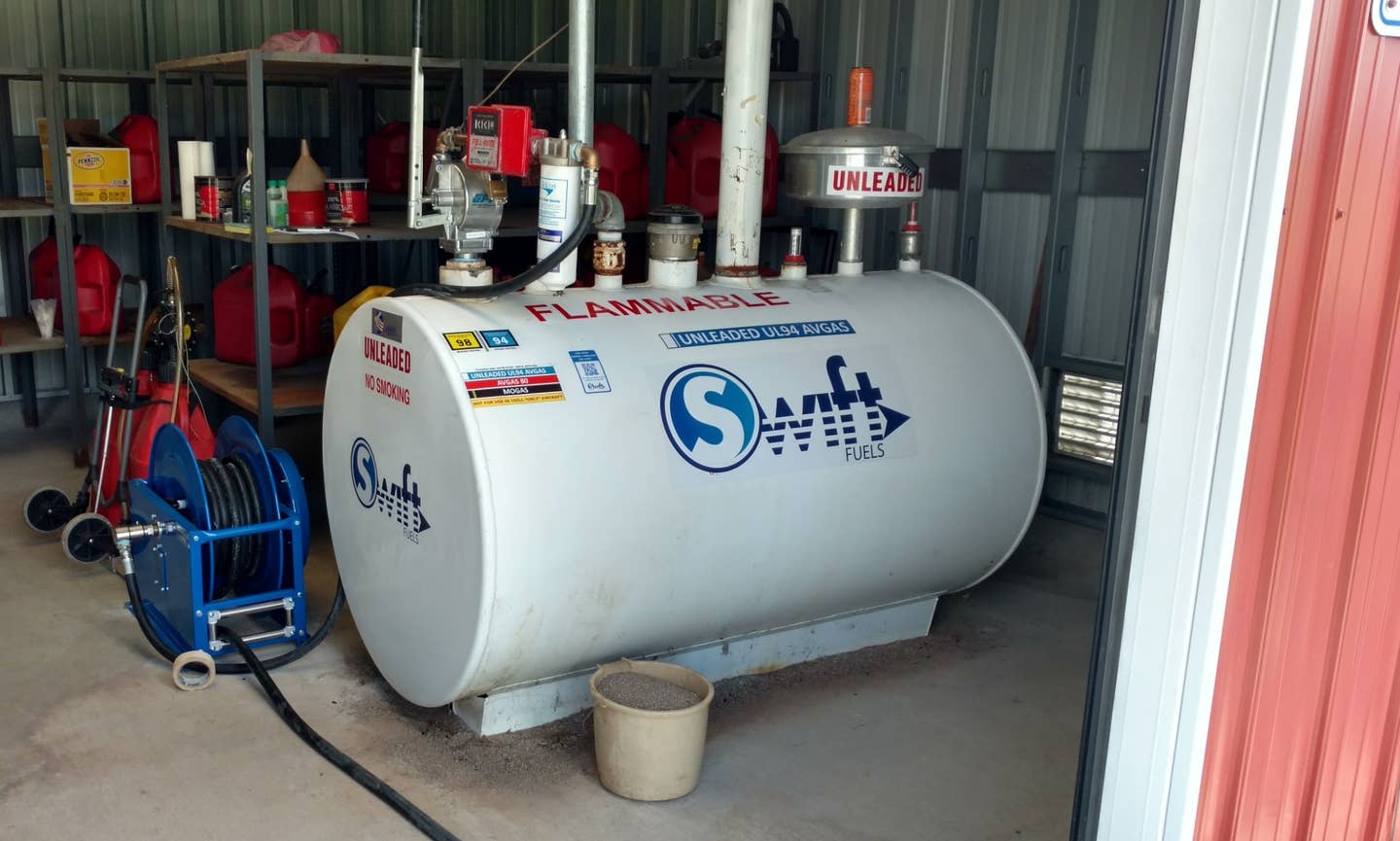Spark Plugs
It doesn’t get much more essential for getting rated engine performance than a properly functioning set of spark plugs.
Spark plugs. Those pricey little fire-starters screwed into each cylinder can tell you much about the health of your engine and perhaps about your operating technique. Like anything else, learning to remove, read and reinstall spark plugs takes some knowledge and practice, but it's something that's well worth your effort. It is definitely not the same as dealing with automotive plugs, so you may have some things to both learn and unlearn.The list of tools you will need begins with a six-point, deep-well socket and socket wrench, and a 7/8 or 5/8 open-end wrench, depending on spark-plug type. (The special, very expensive, Champion spark-plug socket is nice to have because it's magnetic, extra deep and also designed to protectively cradle the plug.) You also need a torque wrench (3/8 drive is the best all-around choice), and an inexpensive plug sandblaster (or, better yet, access to a high quality blaster/tester) with proper blast media.
300
You will need cleaning solvent such as methyl ethyl ketone (MEK) or acetone for cleaning the firing ends and cigarettes, and some anti-seize compound for the plug threads. Don't forget to buy new or use annealed plug gaskets, since reusing the old ones without annealing them is a no-no, and definitely asking for cylinder-gas leakage.Lastly, get a plug tray if you don't have one, or make one. They are ridiculously priced for what you get but some form of tray is an absolute necessity. It will allow you to easily keep track of which plug goes where (so you can use the plug to help determine cylinder health) and to avoid dropping one off the bench. A dropped plug is a throwaway every time it happens. The plug internals and tip are too delicate to tolerate dropping of any sort, and a crack in the ceramic is not always readily apparent ... but your engine will know very fast, to its detriment.
The Terminator
300
Spark-plug terminal ends and ignition-lead connectors should be examined every time you have cause to disconnect them. Whether it's to change plugs, do a compression check or just to get the ignition lead out of the way to make some other job easier, take a minute to eyeball both the terminal well and the ignition lead.Start by examining the lead terminal. Those "all-weather" terminals on 7/8-inch plugs feature an insulator sleeve that has an exposed edge. Look closely at this edge and the cigarette for signs of carbon tracks. These will look like pencil lines that can run across the width of the end of the insulator sleeve. If you find any, chances are the lead connector is defective, permitting electrical discharge (which produces the carbon tracks) to the metal part of the spark-plug shield, allowing an alternate voltage path to ground.Essentially, this is a form of misfiring. Chances are you may have noticed some indication of this occasionally during high-power engine operation (like takeoff and climb), or it may have only been occurring during high-altitude operation where the air's insulating properties are reduced. Oddly enough, sometimes a defective connector only shows up after installing new plugs. This sort of thing is often responsible for pilot reports of high-altitude misfire that can't be reproduced by the mechanic during ground runs. Minute examination of the magnetos, which are generally the first suspect when the words "high-altitude misfire" are uttered, will come up with nothing amiss.
300
Faced with apparently perfect mags and a condition that doesn't show up on ground runs, owners can wind up going through several cycles of bringing the airplane back with the same complaint. So make sure you take a look at the terminal leads first if misfiring is the complaint. They're a lot cheaper and easier to get to than the mags or harness.Check the length of the contact springs at the end of the leads while you've got the lead in your hand. Short springs that prevent a positive contact between the contact spring and the contact point in the plug may also produce misfiring symptoms. Please replace them if they are burned shorter; don't try physically stretching them to last a little extra time. It doesn't work well, and springs are cheap. The spring contact surface can be smoothed up with 320-grit sandpaper if they are a bit rough or pitted.Usually, any misfire due to short contact springs will occur under strenuous conditions, but in extreme cases it may show up at even low power levels with a lean mixture.Avoid handling the cigarettes bare handed, once they have been cleaned. The oils from your hands can lead to carbon tracking and misfiring. If the cigarettes look a little dirty or you manage to get your greasy fingerprints on them, clean them up with some MEK or acetone. Acetone is often much easier to find under the stricter EPA rules. Acetone is a less "powerful" solvent than MEK, but does the job. The idea is to avoid leaving any solvent residue behind. The "stronger" solvents like acetone and MEK tend to flash off quickly (polluting the air), but leave no residue.Check the well at the bottom of the insulator around the contact cap. If you see black, soot-like deposits, chances are extreme temperatures have baked the ignition lead's insulation at some point. If this is the case, start looking for the source of the excess heat. It may be the cylinder baffles near that plug aren't seating right, or the baffles are damaged or even missing. If it's a plug that's near the exhaust, check for possible leaks around the stack flange that could be torching the plug.
The Firing Squad
300
Most any plug you pull out of a cylinder is going to have deposits of some sort on it. Brownish-gray or a gray tinted with a little red is perfectly normal for most plugs. Sometimes, depending on the type of operation the engine is used for, you'll see other color combinations, but as a general rule, gray is the color of choice.Autogas, where approved STCs exist, is clearly superior here, minimizing plug deposits since the lead in 100LL is the biggest cause of the formation of deposits. Autogas can, however, promote lots of soot in the exhaust system from the automotive additives it contains. Autogas has many, many variations in make up, depending on where in the country that you are. No ethanol allowed.Dull, smooth, black deposits indicate lead/carbon fouling. Obviously, incomplete combustion is the usual suspect, but improper operation of a cold engine (like jamming the throttle open) can produce the same thing. Don't be surprised to find these sorts of deposits after prolonged taxi (without leaning) particularly on a cold, wet day.On the other hand, don't be too quick to shrug these deposits off as poor operating technique or a bad day. That plug may be trying to tell you it's time to do a compression check (a weak jug will produce these deposits). Or it may mean that the primer system needs attention. (Primer systems can leak fuel into the cylinders when it's not supposed to. Dieseling at shutdown is one example.)If you find both plugs in one cylinder with these deposits, chances are that jug is starting to use too much oil. If you've been experiencing some apparent "lead fouling" on one jug before the first flight of the day and have been finding it getting steadily harder to burn off, do a compression test and a borescope check. That jug is probably on the way out, with ring problems leading the way.If the plugs have black deposits with a rather glazed look to them, and maybe the deposits are kind-of irregular, the problem might be behind the control yoke. This type of deposit is usually associated with prolonged idle operation followed by jamming the throttle open. The solution is simple: Don't do that. Using TCP (tricresyl phosphate) helps reduce fouling in cruise, but not so much for idle-induced fouling where plug temps are low. This is where ground leaning is the preferred method to reduce fouling.Maybe your plugs have an orange-yellow glazed appearance on the insulator tip. This indicates a plug that's been running too hot and the cylinder it's installed in has probably been mildly detonating. (Don't expect that you will hear detonation in an aircraft engine.) Improper leaning may be the cause here, but further investigation is merited. You may be looking at a problem like a clogging injector.
300
Plugs that have an ashen look to the insulator can indicate severe detonation and/or pre-ignition. Also, there will be no deposits on the plug, since they will have been fried away by the intense heat. The extreme temperatures associated with this also produce some other interesting effects. For example, on fine-wire plugs, the side electrodes will become blued or take on a bluish-gray appearance. Massive-electrode plugs have been known to experience center electrode meltdown, with copper running out. If you find plugs that look like this, major engine problems are underway, and immediate (as in, before further flight) investigation is required. Borescope the affected cylinder, and if you're the least bit suspicious, pull it. Piston damage and possible ring breakage, if it hasn't already occurred, is going to be imminent. You're looking for both damaged components and for the cause of the detonation. Your problem is severe, so waste no effort in getting to the bottom of it.Oil-soaked plugs indicate oil is getting into the combustion chamber beyond what the plugs can handle. An oily bottom plug may be the start of ring wear, but is quite common as the engine wears. Gravity at work contributes to this condition. When the oil gets to the top plugs as well, then the situation is beginning to get to the point where you will need to stem the flow of oil.Ignoring this significant oil fouling can lead to broken rings if it gets bad enough to foul the ring lands. Don't carry oil cases around; instead, fix the problem properly.With respect to bad deposit build-up, it can be from plugs that are too cold for the heat range you need, or too much lead in the fuel -- i.e., 100LL in an 80-octane engine. Today we don't have much choice in the grades of fuel available, so we compensate with optimal plug selections, ground leaning, and TCP use.
Clean, Gap, Bomb-Test
300
To minimize blast time, which can take hundreds of hours off the life of a plug, first clean the plug firing ends about an inch deep in solvent. You don't want it all the way into the plug-firing cavity. Solvent dissolves surface deposits and carbon.Follow this with a purpose-made electric vibrator cleaning tool (preferably) to get more stubborn deposits off, and be careful not to damage the ceramic. You can use a dental type pick, but this is painfully slow and less effective.Now it's time for a blast. Be quick about it: No prolonged blasting, as it takes the life out of the plugs very fast. Five seconds with a rotating motion of the plug to hit all the areas in the plug firing cavity with the blast. Be sure no sand is left jammed in the plug or you will have a surprising, huge, mag drop at first run-up. Use a magnifier. The massive electrodes in this type of plug really restrict access into the well, and that's why rotating the plug while it's in the blaster helps. If the first five seconds don't clean it, then give it five more.Check the electrodes for acceptable wear and verify the gap is OK. If you need to change the gap, have an A&P show you how the first time. Massive-type plugs and fine-wire types need different tools and techniques for gapping work. (You should not try to bend electrodes back out if closed too much; they tend to work-harden and snap.)Now do a bomb test. The device for this is found in the same high-quality, FBO-type machine that also cleans the plugs. This subjects the plug to a simulated compression condition that it will see in the cylinder. A plug that fires fine in open air may fail in compressed air conditions in the cylinder -- thus the need to bomb test for a more realistic function test.
Other Problems
Occasionally, you may find a spark-plug base gasket (the copper ring) that has black deposits on it. Usually, this indicates a loose or improperly torqued spark plug, which allowed exhaust gases to escape around the gasket. It may mean the plug hole suffered thread damage, so check for that. The steel inserts in the aluminum cylinder need to be cleaned, or at least checked at every plug removal.Debris can build up from carbon deposits and prevent the plug from seating all the way into the cylinder, or just cause a false torque reading. A toothbrush can be used with a very light coat of grease on the bristles to keep carbon or other bad stuff from dropping into the cylinder and causing worse problems than fouled plugs.It is not a good idea to use a thread chaser to clean the thread insert because the thread chaser can back it out. It's a good idea to blow out the plug wells with compressed air prior to plug removal. This helps assure no debris remains in the plug well.
False Economy
Loose plugs may also be indicative of a bad idea of saving the cost of plug gaskets by reusing them. Don't do it; consider the potential damage from reusing gaskets. When a gasket is first used, it takes a set to the plug/cylinder insert and work hardens -- even copper. When reused, a gasket will not properly conform to its new home. If you try to over-tighten to "make it reform by cold working," in all likelihood you will end up with a stuck plug that brings out the plug insert from the cylinder head with it. If you buy "cheap" plugs that come with a folded-metal spacer instead of a copper washer, throw the spacer away and use a copper washer. If you must save a bit of money, anneal the used gaskets by re-heating in an oven for 15 minutes at 300 degrees F. Just don't let your spouse catch you using the family range.A spark plug with a cracked insulator tip may mean serious cylinder distress is in the offing. If both plugs from one cylinder have cracked tips, investigate further. If it's just one plug, chances are that plug was mishandled in gapping or installation.
Installation
300
Based on the plug condition, you may want to go up or down the heat range. Just check the approved plugs for your engine in the Type Certificate Data Sheet. You can also check the engine-maker's service bulletin. They usually have an approved spark-plug list.An experienced A&P can be a great help in diagnosing plug condition and what the plugs tell you about your operating technique, your engine health and the operating conditions.Always use the recommended anti-seize, and never, ever, get it anywhere on the plug tip, electrode or firing area, as the anti-seize is also an effective anti-fire for the plug. Use it sparingly and not on the first three threads or so of the firing end. But never skip anti-seize for fear of causing a misfire, because the plug will be difficult to nearly impossible to remove. And don't use engine oil in place of anti-seize.Always use a torque wrench and six-point socket to install plugs. It's no fun to blast combustion gases past the plug from under-torquing or to back out the heli-coil steel insert from overdoing it. Those mechanics with calibrated elbows need not worry. Tip: It's often best to start the plug with your fingers to make sure you don't cross-thread the plug.When tightening the ignition-wire cap hex, hold the plug hex to prevent additional turning of the plug in the cylinder. Don't over-tighten the hex nut. That makes for easy removal next time, and avoids the twisting of the lead. Be sure all leads are properly secured all the way to the mags. It helps avoid crossfire and lead chaffing.Last, don't forget to rotate the plugs. This helps to assure even electrode wear due to the alternate polarity firing in the standard factory-mag setup. See the simple rotation diagrams. They are different for four and six cylinders.
Fine-Wire Plugs
300
What are the advantages of fine-wire plugs? The primary advantage is that they will fire much more effectively in oil, but they cost several times more than massives. So if you have an oil-burning cylinder or cylinders, or the bottom plugs constantly need re-cleaning soon after cleaning, a fine-wire plug may give you relief ... at least some relief, but only for a while. It only helps the symptom, not the cause. And yes, you can mix both fine wires and massives.There is another reason to use fine-wire plugs. A while back, RAM Aircraft did a study with fine-wire plugs in remanufactured engines in their aircraft, primarily Cessna twins with TCM TSIO-520 550 series engines. They found a measurable improvement in fuel consumption compared to massive plugs. The improvement required an increase in plug gap beyond the recommended limit to maximize savings, but even at the maximum recommended approved gap, some savings in fuel was made.RAM felt the savings were more than enough to offset the higher price of fine-wire plugs over the engine life. It's also recommended to use only the single-electrode version, as they scavenge more efficiently.
More aircraft repair and prevention articles are available in AVweb's Maintenance Index. And for monthly articles about aircraft maintenance, subscribe to AVweb's sister publication, Light Plane Maintenance.




